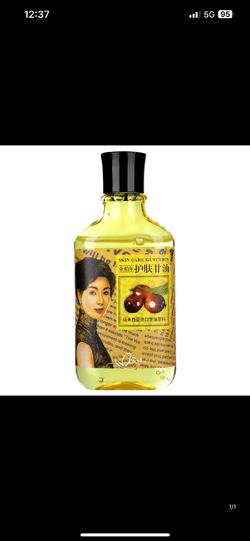I finally became a member after several years of reading the forums in badger and blade, so that I can share some of the things that I have learned in my 30 plus years of wet shaving.
I have shaved with a safety double edge razor for the better part of 30 years. I have also shaved with a straight razor and the multiple blade plastic cartridges. I use the safety double edge razor as my preferred daily shaving instrument. I have also made my own soaps.
I believe that half of the process of shaving is good lathering, therefore I will begin with this subject. There is a lot of dialogue in the forums about shaving soaps and creams, there is also mention of using only oil.
I believe that a good lather provides the slickness (friction reductions) of oils but it makes the experience less oily. It is easier to wash off lather than oil. Lather contains water, water hydrates the beard whiskers, the combination of water and oil soften the whiskers better than only water or only oil. Lather also allows you to keep track of the areas that you have already shaved, oil by itself makes it harder to keep track of these areas. A good lather also give you other benefits like cushion. Cushion is a very misunderstood concept. Cushion is the property of the lather that keeps the beard whisker in a position that makes the blade more effective in cutting them. Cushion is proportional to the amount of air trapped in the lather as micro-bubbles. Good quality natural oils in the lather keep the skin more hydrated counteracting the drying effect of the soap.
Understanding the basics of how soap works helps with producing the right lather for your shave. A good lather is important for a good shave. A good lather does not have to be expensive.
Lather is a colloidal of water, soap, oil(s) and air. Soap allows the oils to be emulsified into the water and the agitation with the brush introduces the air.
Having full control of the properties of the shaving lather (cream, not foam) is important. You can achieve this control by combining your preferred amounts of water, oils and soap to make the lather that is right for you. You can also add any scented oils to your individual preference.
Water, soap, oil(s) and a good brush is all you need. An unscented soap (or lightly scented) that contains either tallow or stearic fatty acid and lauric acid is sufficient (the best ratio of stearic to lauric is 80% to 20%). Soap is fatty acids and sodium hydroxide and/or potassium hydroxide.
Many commercially available commodity soaps meet this criteria, for example palmolive, irish spring, etc. Also hand made soaps that contain stearic and lauric fatty acids will work and all the more pricey specialty shaving soaps will also work.
Shaving creams that lather are premix soap, oils, water, scents and preservatives.
Many people use preshave oil(s) this improves the shaving soap or cream to make a better lather. You do not need to use a preshave oil(s).
There is no need to make things too complicated or mysterious.
You can start with this base proportions:
15 ml of water
3.5 ml olive oil
Commercial commodity soap (if you use specialty shaving soap reduce the amount of olive oil because they are super fatten, they contain extra oils in the formula to make the lather)
Optional
2 to 8 drops of scent oils like menthol, clove, agar, sandalwood, etc. This is optional.
Use a bowl. Place the water and the olive oil in the bowl, wet the brush with the water and oil. Charge the brush with soap and return to the bowl. Whisk the brush in the bowl. Repeat 2 to 3 time.
Continue to whisk the brush in the bowl until you have the consistency you prefer. Apply to your face.
Adjust the amounts of water, olive oil and the times you charge the brush with soap to your preference, this gives you full control of the properties of the lather.
Thank you for allowing me to share.
I have shaved with a safety double edge razor for the better part of 30 years. I have also shaved with a straight razor and the multiple blade plastic cartridges. I use the safety double edge razor as my preferred daily shaving instrument. I have also made my own soaps.
I believe that half of the process of shaving is good lathering, therefore I will begin with this subject. There is a lot of dialogue in the forums about shaving soaps and creams, there is also mention of using only oil.
I believe that a good lather provides the slickness (friction reductions) of oils but it makes the experience less oily. It is easier to wash off lather than oil. Lather contains water, water hydrates the beard whiskers, the combination of water and oil soften the whiskers better than only water or only oil. Lather also allows you to keep track of the areas that you have already shaved, oil by itself makes it harder to keep track of these areas. A good lather also give you other benefits like cushion. Cushion is a very misunderstood concept. Cushion is the property of the lather that keeps the beard whisker in a position that makes the blade more effective in cutting them. Cushion is proportional to the amount of air trapped in the lather as micro-bubbles. Good quality natural oils in the lather keep the skin more hydrated counteracting the drying effect of the soap.
Understanding the basics of how soap works helps with producing the right lather for your shave. A good lather is important for a good shave. A good lather does not have to be expensive.
Lather is a colloidal of water, soap, oil(s) and air. Soap allows the oils to be emulsified into the water and the agitation with the brush introduces the air.
Having full control of the properties of the shaving lather (cream, not foam) is important. You can achieve this control by combining your preferred amounts of water, oils and soap to make the lather that is right for you. You can also add any scented oils to your individual preference.
Water, soap, oil(s) and a good brush is all you need. An unscented soap (or lightly scented) that contains either tallow or stearic fatty acid and lauric acid is sufficient (the best ratio of stearic to lauric is 80% to 20%). Soap is fatty acids and sodium hydroxide and/or potassium hydroxide.
Many commercially available commodity soaps meet this criteria, for example palmolive, irish spring, etc. Also hand made soaps that contain stearic and lauric fatty acids will work and all the more pricey specialty shaving soaps will also work.
Shaving creams that lather are premix soap, oils, water, scents and preservatives.
Many people use preshave oil(s) this improves the shaving soap or cream to make a better lather. You do not need to use a preshave oil(s).
There is no need to make things too complicated or mysterious.
You can start with this base proportions:
15 ml of water
3.5 ml olive oil
Commercial commodity soap (if you use specialty shaving soap reduce the amount of olive oil because they are super fatten, they contain extra oils in the formula to make the lather)
Optional
2 to 8 drops of scent oils like menthol, clove, agar, sandalwood, etc. This is optional.
Use a bowl. Place the water and the olive oil in the bowl, wet the brush with the water and oil. Charge the brush with soap and return to the bowl. Whisk the brush in the bowl. Repeat 2 to 3 time.
Continue to whisk the brush in the bowl until you have the consistency you prefer. Apply to your face.
Adjust the amounts of water, olive oil and the times you charge the brush with soap to your preference, this gives you full control of the properties of the lather.
Thank you for allowing me to share.





